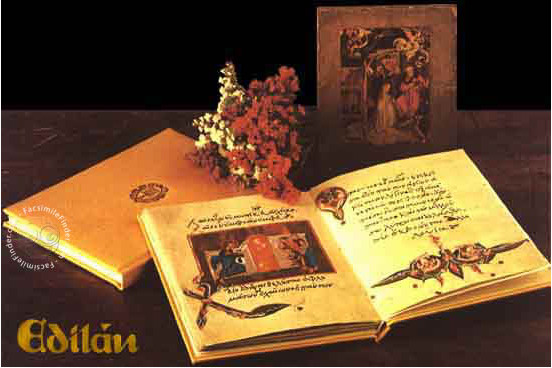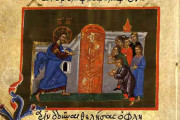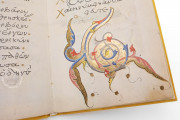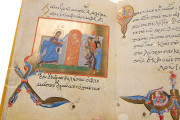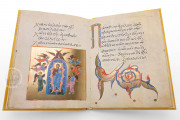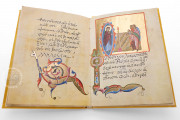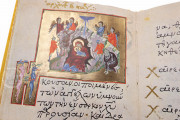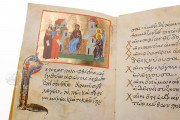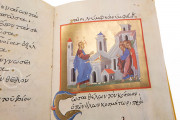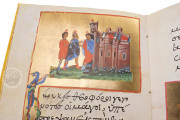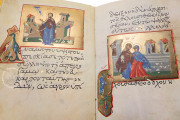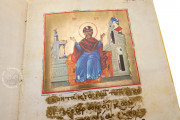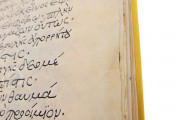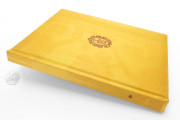The Escorial Akathistos is one of only two surviving illuminated Greek-language copies of the revered Christian Orthodox hymn Akathistos, a celebration of the mystery of the Incarnation of Christ. Copied and illuminated in Constantinople in the second quarter of the fifteenth century, the manuscript's illumination is an important witness to the strength of Byzantine artistic tradition in the last decades of the empire as well as a new receptivity to aesthetic influences from Western Europe. The manuscript boasts twenty-three (of an original twenty-five) miniatures, as well as decorated initial letters and tailpieces, all on burnished gold leaf grounds.
The Akathistos is a very old (probably sixth century) and theologically sophisticated poetic sermon (in Greek, kontakion). It occupies the opening twenty-nine folios (fols. 1-28 and 32) of a manuscript compilation of liturgical and devotional texts focused on the Virgin Mary. It is the only text in the manuscript that is illuminated.
Sermon and Song of Praise
The Akathistos comprises two sections of twelve stanzas each preceded by a proem. The first section focuses on events in the life of the Virgin from the angel Gabriel's announcement that she is to bear a child to the recognition of the infant's divinity by the prophet Simeon as the child is presented in the Temple. The second is a tract in praise of the mystery of the Incarnation ending with a prayer to the Theotokos (Mother of God).
A Strong Aesthetic Tradition
The subjects of the miniatures reflect the text's structure, with narrative scenes giving way to more abstract subjects at fol. 18. Axial symmetry is favored even in narrative scenes, and a balance is struck between the impression of space suggested by the background architecture and vegetation and the otherworldliness implied by the shimmering gold grounds. Both the hieratic compositions and the palette—dominated by gold, blue, ocher, and vivid red—reveal the artist's strong adherence to Byzantine aesthetic tradition.
New Influences
The painted initials and especially the decorated tailpieces—included to fill out a page before the beginning of a new stanza—betray the artist's interest in an artistic vocabulary recently learned from Western Europe. The floral, foliate, and animal motifs are strongly reminiscent of contemporary painting in Italy, especially Bologna, even though always executed on the burnished gold leaf grounds characteristic of Byzantine art.
A Named Scribe
The scribe, Georgios, wrote the main text in a remarkably large and spacious Greek minuscule. The initial chi of the Greek exclamation "Hail!," which occurs often in the poem, is always enlarged and executed in gold leaf.
A Prize Acquisition for Philip II
Philip II (1527-1598), King of Spain, acquired the manuscript in Flanders in the 1550s, when it was bound for him in patterned silk, to be a part of a collection of precious manuscripts for the future royal library at the monastery of San Lorenzo at El Escorial, the construction of which was completed in 1592. During the Spanish Civil War (1936-1939), the manuscript was on deposit for safekeeping at Perelada Castle.
We have 1 facsimile edition of the manuscript "Escorial Akathistos": Hymno Akathistos facsimile edition, published by Edilan, 1981
Request Info / Price
